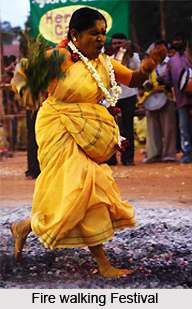 People of Karaikal District are the regional inhabitants of country, which is present in the Indian Union Territory of Puducherry. They have been adhering to their individual customs and traditions since times ancient times. People of this Indian district belong to different religions and communicate with the aide of Tamil language, which is the most commonly used language in this area.
People of Karaikal District are the regional inhabitants of country, which is present in the Indian Union Territory of Puducherry. They have been adhering to their individual customs and traditions since times ancient times. People of this Indian district belong to different religions and communicate with the aide of Tamil language, which is the most commonly used language in this area.
Demography of Karaikal District
As per the records of 2011 census, Karaikal District possesses a population of 2, 00, 314 and has been ranked 589th in the entire country. The literacy rate of this district measure 87.83% and this region boasts of a sex ratio of 1084 females for every 1000 males.
Culture of Karaikal District
Since, Karaikal District is bounded by the southern Indian state of Tamil Nadu, Tamil forms the principal language which is employed by the local residents of this district, for the purpose of conversing. The four orders of the caste system namely, `Brahmins`, `Kshatriyas`, `,Vaishyas` and `Shudras` have been observed in Karaikal District since ancient ages, as per the Hindu customs and beliefs. Historians are of the view that this particular caste structure used to be followed also during the regime of the Chola Dynasty.
With the passage of time and the arrival of Kanarese and Telugu people into Karaikal District, several new castes were introduced in this portion of India, especially during the existence of Vijayanagar Empire. When this region was ruled by the French, they had not intervened with such caste system in this district. It is said that when the French had re-established their rule in Karaikal District during 1816, the Hindus were governed under the provisions of the French Civil Code. However, no modifications were made to the traditional social strata of Karaikal. The local people celebrate numerous festivals which include `Masimagam Festival`, `Sani Peyarchi festival`, `Kandoori festival`, and `Fire Walking festival.`
Religion of Karaikal District
Hindus, Christians and Muslims constitute the major religions in the district of Karaikal. There are about 99 temples in Karaikal, out of which 8 are supervised by private management and the remaining 91 are controlled by the Government. Devotees will find that there exist 8 Ganesha temples, 15 Vaishnavite temples, 30 Shaivite shrines and 13 other shrines which are dedicated to other religious deities.
Muslims are a predominant community residing in Karaikal District, and have been dwelling here even prior to the advent of the French in the year 1674. Arabs had shifted to this part of the nation in the earlier portion of the 7th century. This district contains two mosques, and a majority of the Muslims belonging to Karaikal District are Sunni Muslims.






